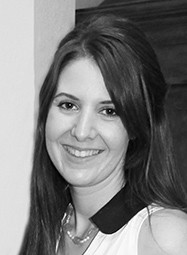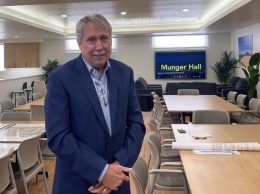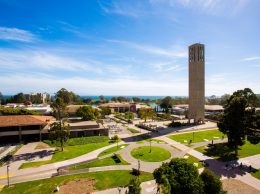Practical prestige: Innovation can be pricey, but pays off
IN THIS ARTICLE
- Columns Topic
- Erika Martin Author
By Erika Martin Friday, November 7th, 2014

Erika Martin
The super-rich: We all know they don’t operate exactly like the rest of us.
That’s why many were a bit off-put, yet unsurprised, that Berkshire Hathaway Vice Chairman Charlie Munger allocated UC Santa Barbara’s largest-ever gift toward housing for visiting scholars — by many measures, not the most pressing of the campus’ needs amidst ever-shrinking state funding.
While $65 million would plug up plenty of budgetary holes or subsidize education for roughly 4,700 California undergraduates, my bet is Munger is more interested in forming a trickle-down education system.
The gift will make the university’s strengths stronger, much like the similarly record-breaking donation rival university Cal Poly San Luis Obispo received from former Apple Chief Financial Officer Peter Oppenheimer to beef up its agricultural science facilities. And at UCSB, the Kavli Institute for Theoretical Physics is king. The center attracts about 1,000 visiting scientists each year, who contribute a total of 23,500 days of collaboration and research, according to the university.
A study published in Proceedings of the National Academy of Sciences ranked the center No. 1 among National Science Foundation facilities in the impact research produced there wields over scientists worldwide. And though “theoretical” is in the name, the innovations yielded by the collaboration fostered at the center often reach the market with implications that can be measured in dollars and cents.
The Nobel Prize-winning work conducted by the center’s former director, David Gross, produced a coherent quantum state of cold atoms that Einstein had predicted, taking quantum computing one step closer to reality. And other Nobel Prize-winning work conducted at the center, this time by Professor Herb Kroemer, developed the semiconductor heterostructures used in high-speed and opto-electronics.
Though the university’s most recent laureate, Shuji Nakamura, conducted his light-emitting diode research largely supported by the Solid State Lighting and Energy Electronics Center, his underlying development of gallium nitride, or GaN, has much to do with work that continues at the center.
Srabanti Chowdhury, a materials Ph.D. bred at UCSB, left the campus for Arizona State University a little more than one and a half years ago but continues research with the university’s scientists. She said the UCSB research community is one of the most successful in building GaN technology from scratch, then developing it into marketable products.
Chowdhury said the research has allowed the industrial sector to fund work that puts better products on the market. She is now focused on delivering GaN transistors that convert power more efficiently in consumer electronics.
“GaN transistors form the heart of every converter you see,” Chowdhury said. “For example, your laptop adapter from line AC to DC 19-volt is actually using this technology. A lot of the power generated the U.S. is actually wasted as heat — if you think of the warmth coming off your charger while you’re using it, that’s the classic example we give to show what we do increases efficiency.”
She said ASU is also well-known for its power electronics program and is hoping to grow a GaN research community similar to that at UCSB, and a few months ago, the department hired another associate of Nakamura’s.
If such work can change the amount of energy we expect our consumer electronics to consume as much as Nakamura’s LEDs have changed the way we think of light bulbs, the university will more than recover Munger’s donation money in patent licensing and added prestige.
By the time Nakamura made his groundbreaking LED discovery, most of the science community had abandoned GaN because it was so hard to work with. Even for Nakamura, the material took years to develop. Though his work began in Japan, the company where he was employed as a researcher denied him funding to develop the material and his breakthrough was made after coming to Santa Barbara.
Munger’s gift makes way for more of that type of beaker-breaking work. The impact may seem more theoretical than direct, but that’s how innovation gets its start.











